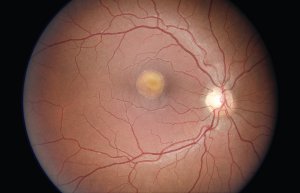Dujon Fuzzard
Fifth Year Medicine (Undergraduate)
Monash University
Dr. Andrew Atkins
MBBS, FRACO
Fifth Year Medicine (Undergraduate)
Monash University
Dr. Andrew Atkins
MBBS, FRACO
Dujon completed a Bachelor of Medical Science in 2009, conducting clinical research within a
regional ophthalmology practice (Bendigo Eye Clinic). He grew up in Bendigo and is interested
in pursuing a medical career within regional and rural Australia. Dujon’s other interests include
playing Australian Rules Football, athletics and playing the guitar.
Andrew is a Victorian-based ophthalmologist who grew up in Tasmania. After attending medical school in Hobart, Andrew completed his ophthalmic training at the Sydney Eye Hospital. To further his knowledge, he followed with a fellowship at the Royal Victorian Infirmary in Newcastle-Upon- Tyne in the United Kingdom. Andrew has practiced in a variety of locations throughout Victoria since the mid 1990s, including Footscray, Brighton, Shepparton and Bendigo. He is a Consultant at the Royal Victorian Eye and Ear Hospital, where he participates in the registrar surgical training programme. Andrew lives in Melbourne with his wife Tracey and three daughters.
Andrew is a Victorian-based ophthalmologist who grew up in Tasmania. After attending medical school in Hobart, Andrew completed his ophthalmic training at the Sydney Eye Hospital. To further his knowledge, he followed with a fellowship at the Royal Victorian Infirmary in Newcastle-Upon- Tyne in the United Kingdom. Andrew has practiced in a variety of locations throughout Victoria since the mid 1990s, including Footscray, Brighton, Shepparton and Bendigo. He is a Consultant at the Royal Victorian Eye and Ear Hospital, where he participates in the registrar surgical training programme. Andrew lives in Melbourne with his wife Tracey and three daughters.

